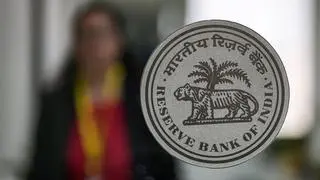Speaking exclusively to businessline, Nirmal Jain, founder, IIFL Group recalls the journey from 2018’s IL&FS crisis to now. Reiterating that ₹1 lakh-crore AUM is his near term goal post, he explains the way ahead for IIFL Finance. Edited excerpts:
You’ve not only come out of a very difficult phase post IL&FS, but at a size where you are larger than some of the banks. How did you strive this?
After 2018-19 crisis, many people thought that standalone (not backed by industrial groups) NBFCs may not survive. Later, there have been series of other crisis, including Covid and some have folded up and to that extent, the industry consolidation has taken place. At the same time, those who survived, have become stronger and bigger.
A few players had to reinvent their businesses, changing focus to retail. For us, fortunately, despite the struggle, we had a good set of people who were willing to stand by the company and make sure that they don’t give up. Our business model was also relatively robust as we were retail focused and digitally oriented.
We give loans of small size and to the customers that banks find it not viable or difficult to access. Our branches focussed on one or two loan products and can break even at small size, say with ₹3-4 crore loan assets. It’s a hyperlocal model. If done in partnership with banks as in co-lending, it is a win-win and will help fulfil the national objective of delivering credit to un-banked.
What is encouraging is that the government and RBI narratives have become positive about co-lending and bank-NBFC partnership. With retail customers, largely if you have good credit standards, risk is dispersed and sudden disasters are unlikely. We could pivot to this model to co-lending. It was a blessing in disguise, because it mitigates liquidity risks. We have one of the largest network of branches (at over 4,400). We source most of our customers ourselves; DSA dependence is very minimum.
You’ve spelt it out in the past that ₹1 lakh crore of AUM is your target. You still hold by it?
It’s a target for FY25 and will be a milestone for us. We are growing by 25 per cent annually. Probably, after this milestone, the future thereafter should be even brighter.
Barring gold loans, in other segments you are among the market leaders in the NBFC space. Is this a deliberate growth strategy?
This is how we want to run the business. You cannot have leadership in one business and in other businesses you are like a ‘me too’ player. It’s difficult to have the same quality of management bandwidth unless you don’t aspire to become a leader in the space. In every segment we operate, we have to be amongst the top three. That’s how you get the right to win.
Cost of funds is exactly where it was towards late FY19. But your yields have gone up by over 200 basis point from those levels…
When the crisis hit us, we borrowed dollar bond from foreign players. It was fully hedged, at a total cost of over 11 per cent. Those are repaid now. So, some of the liabilities we raised during the crisis period just to be safe came at a high-cost and in three years, they have been paid back. Now we have a track record where we can negotiate better rates.
What’s your plan on SME lending front?
We have already started on this, though maybe we are a bit late. It’s about ₹2,400 crore business for us now. We have been building this for the last 3 – 4 years and we’ll go cautiously. Any new product, we don’t want to grow too fast. We will not build any business in a rush. Our asset quality is better than the peers in that segment. There is long-term potential.
This segment has also become very crowded in the last three years…
Yes. Secured SME business is a wide spectrum. It can be secured by loan against property (LAP) or through inventory/ receivables. Likewise, from ₹5 lakh – 50 crore, it can be secured SME lending. The competition coming from new players, namely fintech is very small, because the ability to lend is a function of their capital which is limited. The big players in LAP are large NBFCs and big banks. But they are not targeting small-ticket LAPs. There is a lot of noise in the space, but it is still grossly under penetrated.
Certainly there’s crowding in a few segments which are easy to tap. But the smaller segments are still grossly under penetrated, especially the market below ₹50 lakh. How many people are getting LAP for 5-10 lakh? Our comfort is in a smaller LAP segment – less than ₹20 – 30 lakh.
This can be a priority sector lending product for banks….
Yes. Almost all our loans qualify for PSL or zero risk weightage. It gives us the flexibility to sell the assets to banks. We realised that we can be good partners to banks but never a great competitor to the banks. We do what we can do best which is low-cost origination, servicing, and credit control of the loans. Banks can do what they do best which is have capital and risk appetite.









Comments
Comments have to be in English, and in full sentences. They cannot be abusive or personal. Please abide by our community guidelines for posting your comments.
We have migrated to a new commenting platform. If you are already a registered user of TheHindu Businessline and logged in, you may continue to engage with our articles. If you do not have an account please register and login to post comments. Users can access their older comments by logging into their accounts on Vuukle.